UC Blogs
Agriculture is Kern County's second highest export
Almonds, cotton, cherries and fresh vegetables account for the bulk of the region's agricultural exports, said Brian Marsh, UC Cooperative Extension advisor in Kern County, an agronomy and cotton expert.
It helps that the area's harvest for key crops, such as cherries, begins earlier than in other markets, so the local ag sector gets a jump-start with buyers, he said.
Minimal pruning boosts walnuts
Tim Hearden, Capital Press
Researchers affirm it may not be necessary to cut back young walnut trees as much as many farmers typically do.
In an orchard near Arbuckle, Calif., University of California Cooperative Extension farm advisors are finding that trees that are minimally pruned have so far yielded the best tonnage per acre.
"The lowest yield is the heavily pruned one," farm advisor Carolyn DeBuse told nearly 100 growers during a workshop March 6. "The other three treatments were not a significant difference, but the largest yield is the minimal-pruning low-vigor (method)."
Supervisor training offered in Modesto
Lake County Record-Bee
UC Cooperative Extension advisor Gregorio Billikopf is offering a four-day farm supervisor training in Spanish March 16 at the Stanislaus County Agricultural Center in Modesto.
According to Billikopf, a personnel management expert, topics that will be covered include employee discipline, including how to deal with the most difficult subordinate behaviors; interpersonal negotiation skills and the importance of praise in day-to-day communications.
Those who attend will participate in numerous role-plays and receive individualized attention and evaluation.
Pollinator Gardening!
If you want to learn about what bees do, and how gardeners can support healthy pollinator populations through simple gardening practice, then this is...
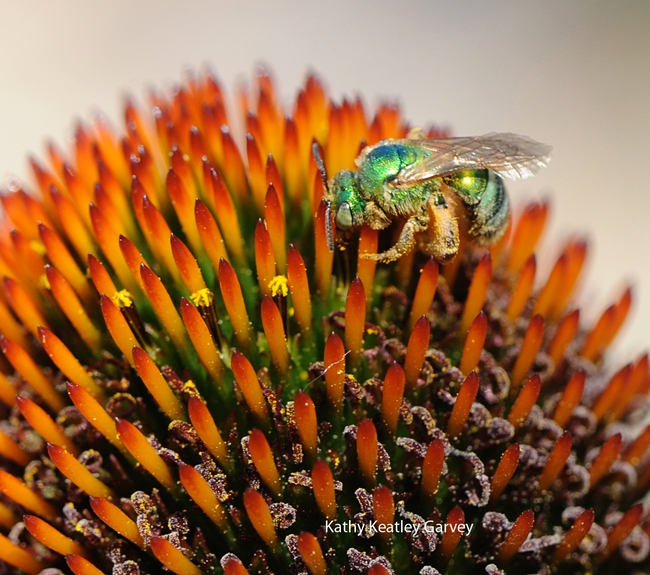
A green sweat bee (Agapostemon texanus) on a cone flower at the Haagen-Dazs Honey Bee Haven. (Photo by Kathy Keatley Garvey)
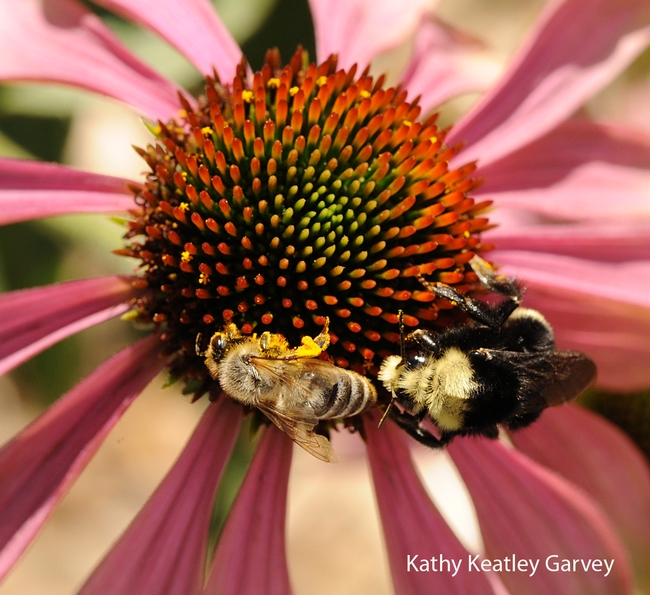
Honey bee and yellow-faced bumble bee (Bombus vosnesenskii) sharing a cone flower in the Haagen-Dazs Honey Bee Haven. (Photo by Kathy Keatley Garvey)
Clash of the Titans: Mutabilis vs. Flowering Pear
One wouldn’t normally think of the pretty Mutabilis rose (Rosa x odorata ‘Mutabilis’), commonly known as the “butterfly rose,” as a titan. But seeing it go up against my flowering pear, which should be shading the Mutabilis out of existence, makes me think otherwise.
The Mutabilis rose is a beautiful China rose with single flowers that bloom nearly continuously from spring to fall. Each flower goes through a color change from yellow-gold to pink to crimson, and all three color phases will be on display at the same time. It is nicknamed the “butterfly rose” because the multi-colored flowers look like butterflies resting on the plant. It is most often described on rose websites as a large shrub, ranging from 6-10 feet tall, although some websites also describe the rose as a climber. Mutablis is one of UC Davis’s Arboretum All-Stars, requiring low water once established.
Several years ago, I planted my Mutablis along a back fence, underneath a sapling flowering pear (Pyrus calleryana, ‘Chanticleer’). I assumed that as the pear tree grew, it would eventually shade out the rose, but I had no place else to put the rose at the time. Now the fully grown pear tree completely shades the main body of Mutabilis and the rose has responded by climbing ever higher into the pear to seek the sun, putting on a dazzling show of butterfly flowers a good 25 feet up the tree. It’s spectacular!
Each spring I wonder how and whether to prune Mutablis, and in some years, I make a token effort to clear away dead and crossed limbs. There’s little point in pruning the rose back to shrub size because it would be entirely shaded by the pear tree. I wonder if the rose is harming the pear tree and whether I should cut the rose down entirely. But the rose doesn’t appear to be too heavy to be supported by the pear tree’s limbs and both plants seem happy and healthy. So I set any decision aside for one more year.
I never imagined that, when I planted Mutabilis in a spot that I knew would eventually become too shady, this foolish but serendipitous placement would create one of my very favorite scenes in my backyard.
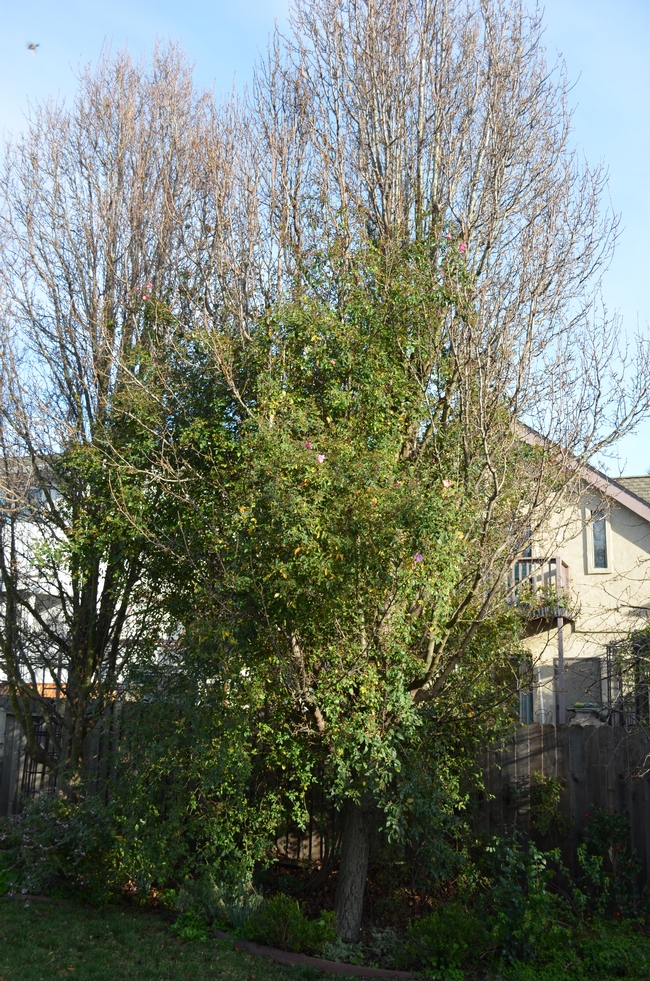
Mutabilis growing in the dormant pear trees. (photos by Erin Mahaney)
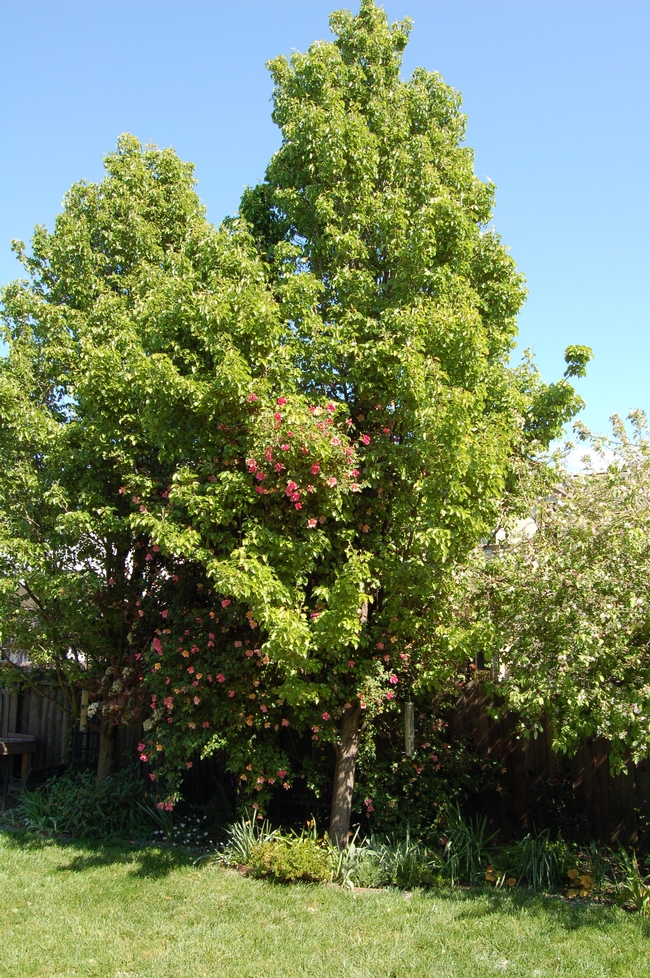
Mutabilis rose in bloom within the pear trees.
How Pamela Marrone Does It
With the global population growing from 7 to 10 billion by 2050, there is an intense debate about how to best feed the world. With that, Pamela...
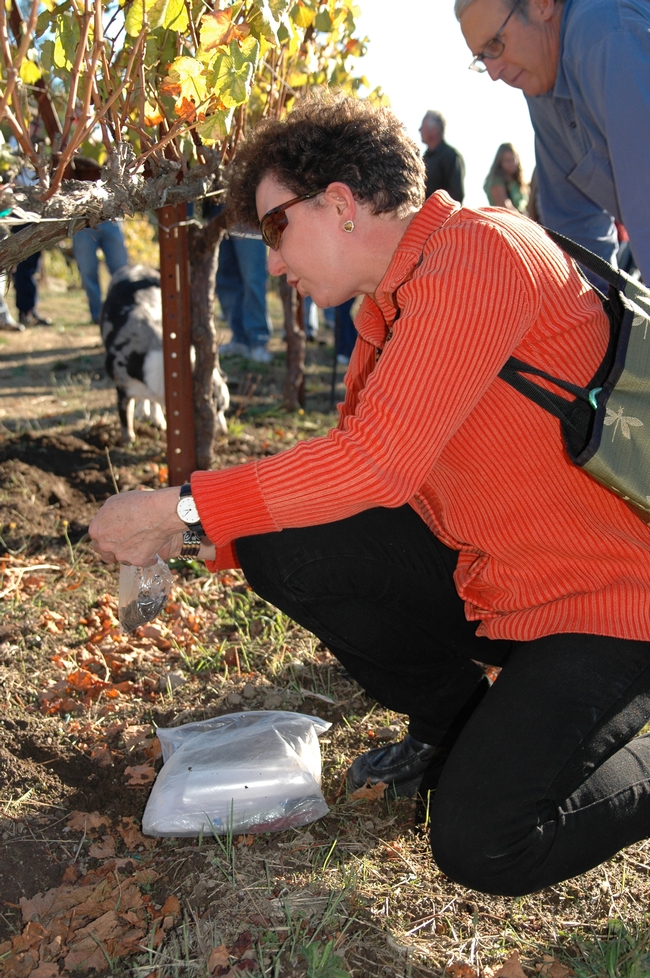
Pamela Marrone is an international expert in agricultural biotechnology and bioscience.
A Plant with a Heart
I love the beautiful foliage of the bleeding heart almost as much as I love it's sweet, delicate, dainty flower. Dicentra spp. (Bleeding heart) is a plant that presents almost no diseases, and can, if well established, last for years. The plant consists of fern like foliage with heart shaped flowers horizontally placed along its arching stems. Colors of the blooms come in yellow, pink, rose, purple, or white, and does well in most growing zones.
Propagation can occur through the planting of seedlings. However, these plants cross or hybridize easily and your plants could look very different from the parent. Your best bet is to propagate by division. That way, you can be sure that the plants bloom will turn out the color you planned on.
Bleeding heart looks charming dotted throughout a bed of low growing ground cover or amongst hosta or coral bells, as it goes dormant in summer, and will leave gaps in your landscape. A mass of bleeding hearts in a shaded border can be quite dramatic.
These lovely plants need rich, light soil, and partial or full shade. Regular watering is advised. Never let water stand around their roots. Foliage dies down in mild winter climates such as ours, so mark the area to avoid digging up the roots in their dormant season. Fertilize with compost or fish emulsion early in the spring, as soon as you see new growth. Mix the fish emulsion with water as directed.
I would like to point out one more positive note in my book for these gems. Under the right circumstances, they reseed. Seedlings may need to be pulled to prevent your other perennials from being crowded out. They pull easily, enabling you to share with your gardening friends--a gift most likely far more appreciated than the proverbial bag of summer zucchini.
One gentle warning. The sap from the roots can cause an irritation to the skin if one tends toward skin allergies. Gloves are highly advisable. Apparently, deer stay away from bleeding heart due to its toxicity.
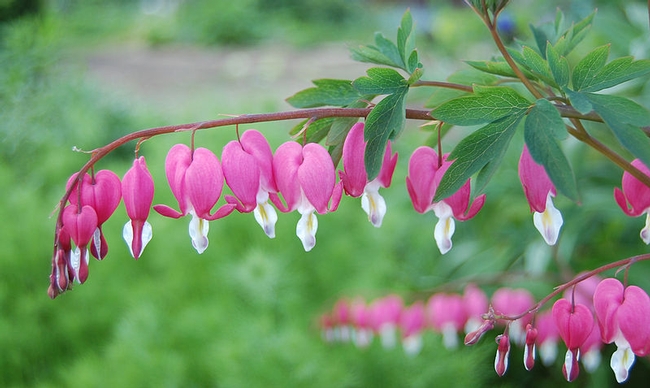
Dicentra spectabilis. (photo from Wikipedia.com)


